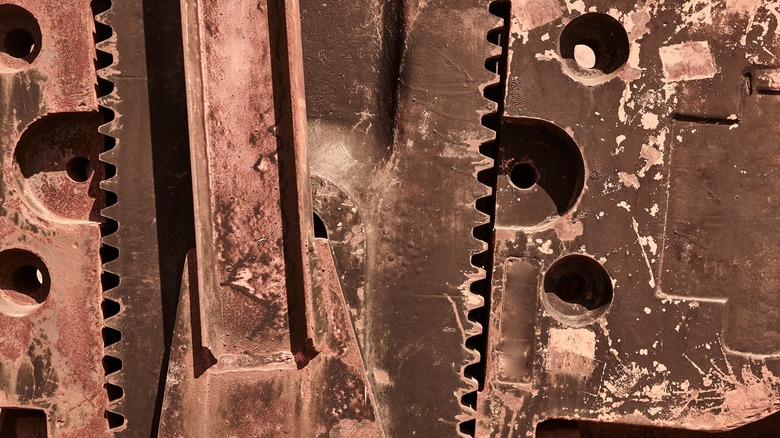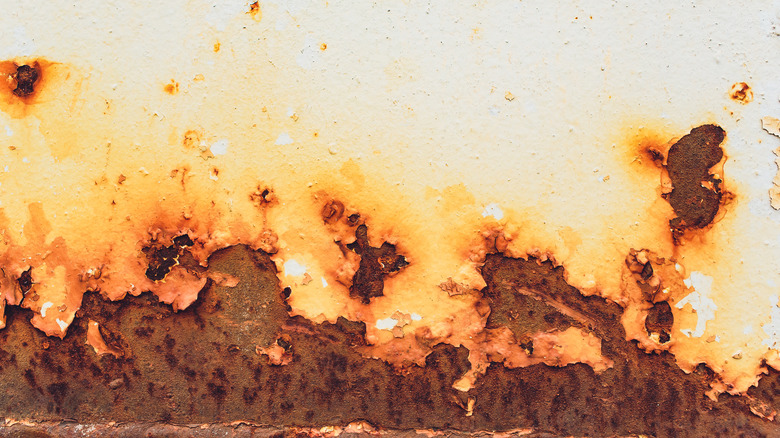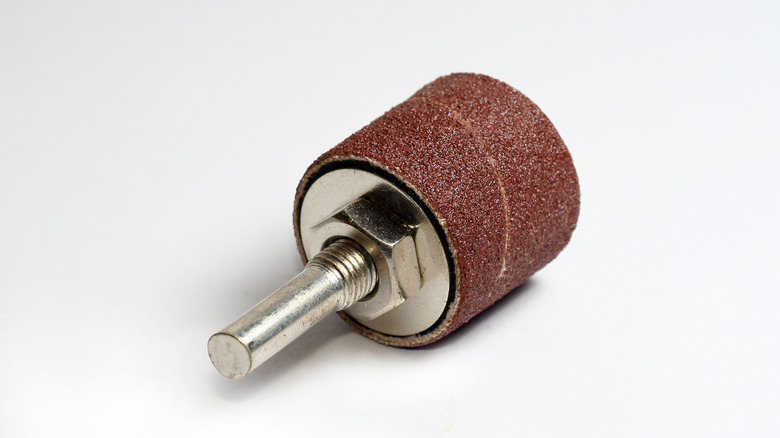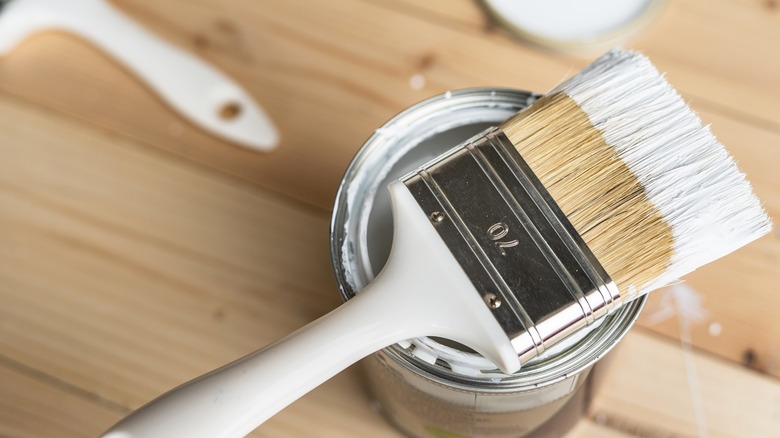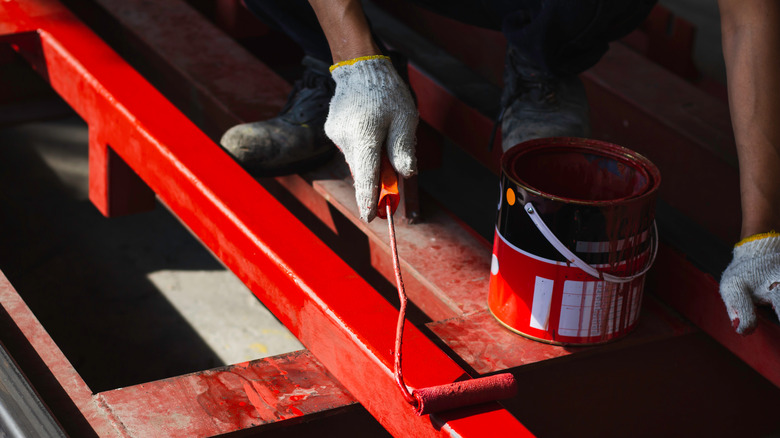4 Simple Tips For Painting Over Rust
Rust, also known as iron oxide, occurs when oxygen reacts with iron, prompted by contact with water. As described by Earth911, the reaction is actually a form of combustion without the flames. Left unchecked, rust will inexorably continue to degrade the metal it is affecting and eat through it. However, it is possible to interrupt the rusting process and salvage the corroded area by painting over it. Painting suppresses corrosion as it shields the iron from water and air. Applying the appropriate top coat of paint, after removing as much of the rust as possible and priming the outer layer, can return the metal to its pristine state.
Superficial rust is merely an aesthetic issue. However, in its more advanced stages, corrosion begins to penetrate the metal. Pitting, etching, and pinholes may appear. Small imperfections can be filled in prior to painting, but significant corrosion may require discarding the item. Per Adcoat Industries, as long as the underlying surface is relatively unscathed and intact, painting over the rust is a practical alternative to throwing away the damaged object. Preparation is an essential part of the painting-over process, and it will determine whether or how long the repainting will last, while no prep at all will render the paint job worthless. Here are our top tips for painting over rust successfully.
Assess for structural damage
It is essential to address problems before the rust spreads and gets out of control. To determine if the rusted item can be restored by painting it, the first step, per Valu Home Centers, is to examine how far and how deep the rust has traveled. Rust that is extremely extensive, or which has penetrated too deeply, may render the object too far gone to be rescued. According to Damotech, if steel has lost 10% of its thickness due to corrosion, it needs to be replaced. Analyze the composition of the metal and the level of deterioration to determine if painting will be sufficient to save it.
AZ Rust points out that the larger the compromised area, the harder it will be to treat the rust effectively with paint. More prep will surely be needed as well. If painting is an option, wait for a day that is not humid and relatively warm to help with the drying time. Be sure to wear a mask, gloves, and protective eyewear, and choose a workspace that is adequately ventilated.
Remove as much rust as possible
Prior to painting, use soap or detergent and water to eliminate surface contaminants and loose rust. Get rid of oily grime with denatured alcohol, mineral spirits (which will also encourage paint adhesion), or a degreaser. Avoid using strong solvents which, according to Krylon, can soften existing paint and prevent a new coat from adhering properly. According to Spray Gadgets, there are several organic rust removers that are especially effective for smaller projects or minor rust spots. Alternatively, overnight immersion in vinegar can loosen dirt and rust, or soaking a half potato in dish soap and rubbing it on the rusty metal will remove surface grime — the spud's oxalic acid will dislodge any loose rust, as will a treatment combining salt and lemon.
A commercial chemical rust remover, wire brush, exfoliating pad, or steel wool can also be used to get rid of loose rust and scale. A scraper, sandpaper, or a small sanding drill bit are other appropriate tools. Sanding will remove any loose or cracking paint remnants and establish a rough surface for the new coat. Do not overdo rust and paint removal too vigorously or else you risk polishing the metal surface, making it less receptive to a new coat of paint. For optimal paint adhesion, aim for a clean, non-glossy, and dry surface with as little loose rust as possible.
Prime before painting
Under most conditions, primer provides the base for a perfect paint job, and it's especially valuable when dealing with a rusty surface. Primer encases rust in a moisture- and oxygen-free covering, according to Rawlins Paints & Coatings. It also prevents discoloration from bleeding rust stains. To be effective, primer should be applied to the entirety of metal surfaces, not the rusted sections exclusively, making sure to cover both the top and the underside.
Fuze suggests using a rust converter, also known as a rust neutralizer. for priming. It relies on tannic acid and polymers to transform the rust into a harmless inert compound, forming a waterproof protective coating at the same time. A rust converter can be brushed or sprayed directly on the corroded area and should generally be applied in several thin layers — however, always follow the manufacturer's instructions. The primed and rust-free surface will now be ready for a topcoat which can be painted on after a 24-hour drying period.
Apply paint over rusted but prepped metal
Remember, painting over untreated rust is destined to fail. When determining which paint to use, viscosity and length of drying time are some factors to consider, according to A Touch Of Color. A urethane enamel coating is an effective and long-lasting choice, however, The Real Milk Paint Co. suggests a more natural approach, by using a paint that is derived from milk, lime, and organic pigments.
Whatever the paint chosen, eHow notes the importance of selecting a paint that works best with the layer of primer underneath it. Make sure that your chosen paint ensures thorough coverage, and aim to cover all the gaps and cracks. Untreated areas of rust will resume their destructive march if overlooked. Several applications of even, full coats are recommended, letting the paint completely dry between layers. Use painter's tape to cover places you do not wish to paint, and employ a drop cloth to protect surrounding areas from droplets or overspray. Waxing is an option after painting a rusted surface. It will prevent the new paint from cracking or blistering and will also serve as an additional water barrier to thwart future rusting.
